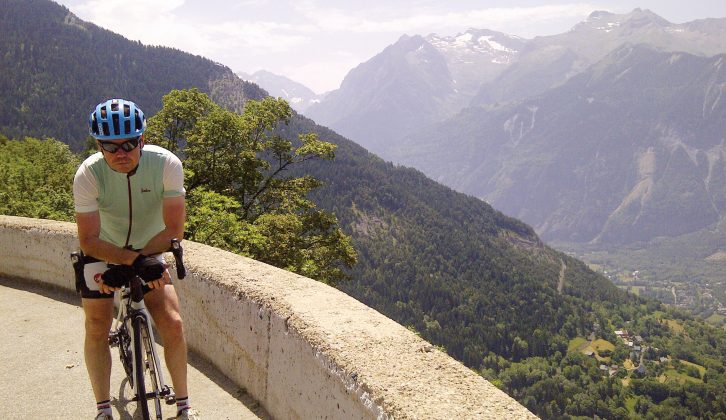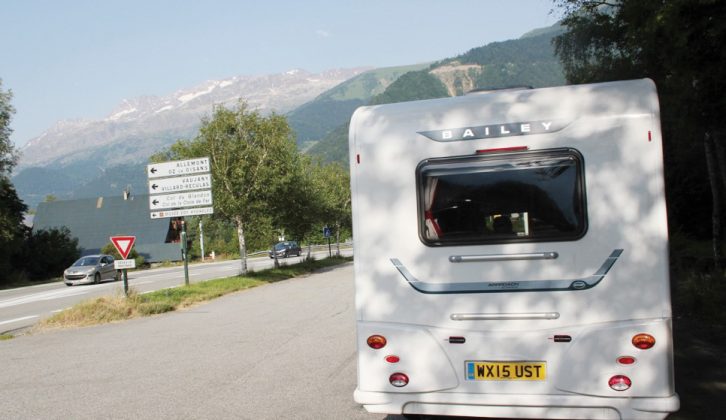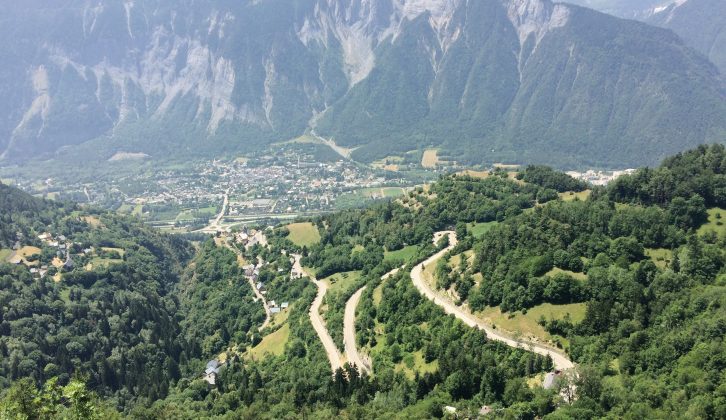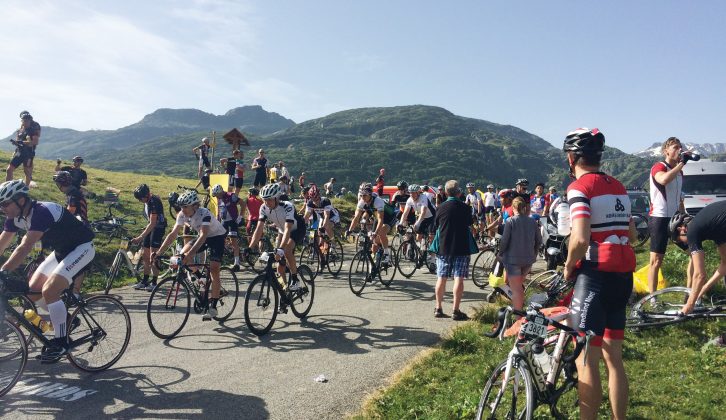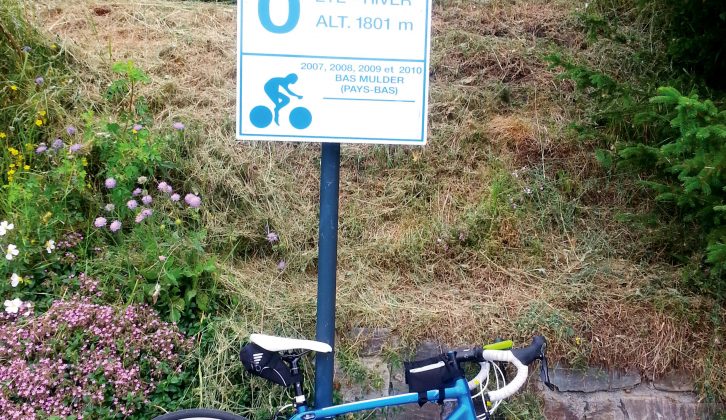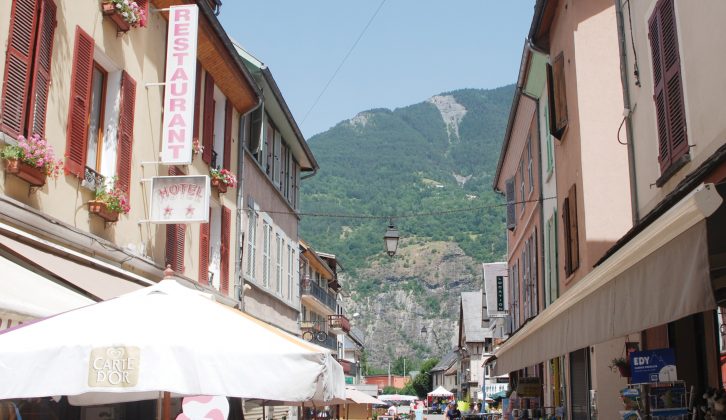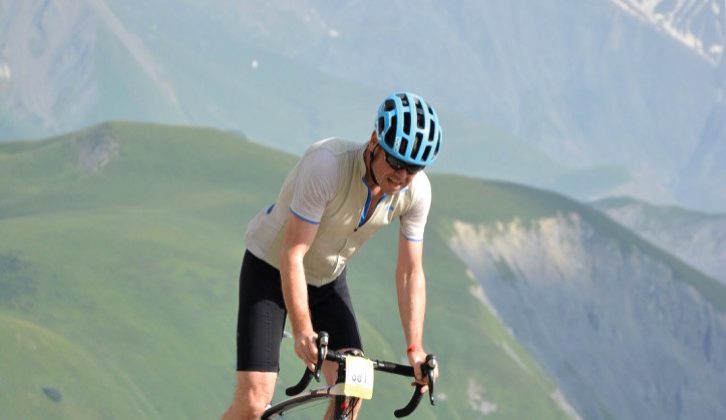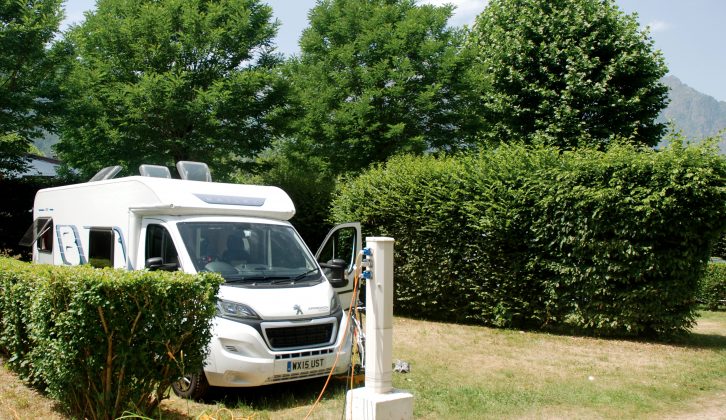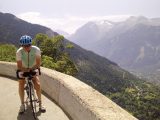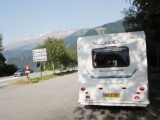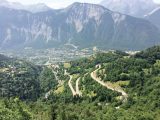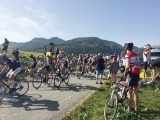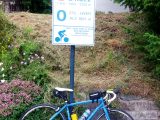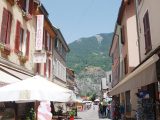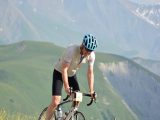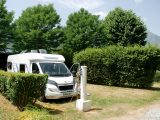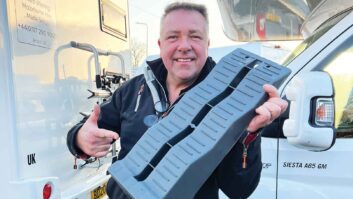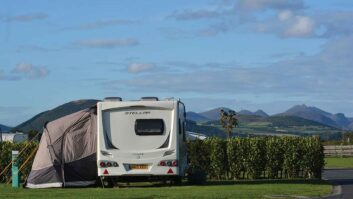The motorhome has a central place in cycling. Conjure up a mental image of one of the great climbs of the Tour de France, and you’ll picture motorhomes parked up around the hairpins, draped with flags and banners, spectators perched on or around them to witness world-class sport for free.
But they’re also intimately linked to the darkest days of the professional sport. American motorcaravanners treasure their privacy and self-containment, but these features lend themselves perfectly to the dark arts of refrigerated blood bags, performance-enhancing drugs and the other nefarious activities of the ‘doper’. The Program, a recent movie documenting Lance Armstrong’s systematic cheating, is filmed at length in motorhomes.
More heartwarmingly, though, many of the rising number of British amateur cyclists who are challenging themselves at ‘sportive’ events throughout Europe use a motorhome to transport themselves and their cherished machinery.
Our trip to France and Belgium was to embrace both the first and last of these phenomena. First, we’d ride an Alpine sportive, then glimpse the peloton as it seared through Belgian cornfields on stage three of the 2015 Tour de France.
Cycling in the Alps: La Marmotte
The Alpine town of Le Bourg d’Oisans welcomes many an adventurer. In all seasons a panoply of sports and sights can be enjoyed; you can ski, hike, climb, kayak or exploit a dizzying array of variations on the theme. However, during the first week of July Bourg fills with 7500 amateur cyclists from around the world, as it hosts La Marmotte, one of the world’s oldest, toughest and most famous cyclosportives.
La Marmotte is brutal – 180km (112 miles) in length, with 5100 metres of climb (16,400ft). The route traverses some of the most famous mountain passes in cycling: Alpe d’Huez, the Col du Glandon, and (usually) the Cols du Télégraphe and Galibier. This year, though, due to serious landslides around the road tunnel below the Galibier at Chambon, the race was rerouted via the formidable cols of the Mollard and the Croix de Fer. So it was a new route, but just as evil.
In July 2015 the Alps sweltered in a heatwave that set records across northern Europe. As a result, my travelling companions and I felt both thrill and dread. We were a trio of 49-year-old cyclists and a doughty motorhome, heading into a metaphorical and literal cauldron.
After detouring around strike- and immigrant-bound Calais, we took a DFDS crossing via Dunkirk in the wee hours, and struck out 1000km south.
Cocooned by the air-con
Our Bailey Approach Advance 665 proved to be the perfect tool: it was compact, yet had ample room for us to safely stow three bikes (our test ’van has no cycle rack) and a range of riding and ‘normal’ holiday gear. We ate up the miles, the 2.2-litre HDI, 130bhp Peugeot engine cruise-controlling its way along the péage at a comfortable 130kph. We played music from our phones, and the ’van’s air-con isolated us from the 36ºC outside world.
In Bourg we arrived at the genuinely delightful A la Rencontre du Soleil campsite, booked via the Camping and Caravanning Club. After receiving a warm welcome and pitching up, we could explore the facilities. The multi-sport hard court, swimming pool (heated and covered for colder days), modern café/bar and beautifully tiled shower block all surpassed our expectations. The site is a calm place, with mature trees and high hedges offering a sense of privacy on the generously sized pitches. Here are some beautifully tended flowers, there are neatly trimmed hedges, and everywhere is a panorama of the stunning mountains that mark out this special park. Above, meanwhile, is the dominant, lowering presence of Alpe d’Huez, offering some blessed early-morning shade.
Our first mountain ride
The next day we stretched our legs by climbing the Col d’Ornan, a 1373m peak nestled behind Bourg. It’s a quiet, pretty road, with sheer walls to the right and drop-offs to the left as you rise through the pines and up to a summer meadow, with a nice café/bar at the col. To our relief, the mid-morning heat was bearable, and our confidence rose. If we drank and ate effectively, we were confident that we’d get this thing done tomorrow.
In the afternoon we climbed Alpe d’Huez – this time in the Bailey – to register for the event. Thanks to the sweltering heat, my doubts resurfaced: even at this altitude the temperature and humidity were shocking. As we descended, our Bailey’s brakes began to overheat on the famous ‘21 bends’. This place is certainly tough on man, woman and machine.
Feeling the heat
And then it was race day: the focus of months of training and contemplation. I’d had no sleep – I was too keyed-up, and too hot. Today, Mike (the most experienced of us) and I would ride the full Gran Fondo route of La Marmotte. Jane, a first-year cyclist, would ride the Alpe and meet us at the top.
Mike and Jane both completed their tasks with remarkable stories to tell. I can tell only mine. I started well, at target pace up the huge Col du Glandon (24km long, rising by 1152m to the 1924m peak). Then, after a rapid descent I climbed the enormously picturesque Lacets de Montvernier.
I wasn’t feeling great, and at 10am it was absurdly hot.
Delirious and desperate
Riding hard in this heat made it difficult to stomach enough food and drink to keep my body working, and I stopped eating properly. On the lower slopes of the Col du Mollard I ‘bonked’, the cyclist’s term for what runners call ‘hitting the wall’. I had low blood sugar: I was light-headed, nauseous, desperate for sleep and increasingly delirious. Less than halfway into the event I was in trouble, with no food stop for at least 20km – and every metre of that would be uphill.
In this situation you have a choice: either stop and wait for the ‘broom wagon’ (which picks up stragglers), or harden up. The broom wagon wouldn’t be along for hours, though; so that limited my options, and I carried on.
I suffered on that mountain like never before. I’d ride for one measly kilometre, then my energy would crash and I’d rest in the shade, still unable to make myself eat properly.
Saved by the baguettes
Eventually, after perhaps three hours of struggle, I reached a feed station at Albiez-le-Jeune. It saved me; one day I’ll return and pay my respects to the locals. On trestle tables were hunks of baguette, salami and ham, as well as sweets, dates, oranges and bananas. Cradling a Camembert wrapper containing liquid cheese, salty meats and bread, I shuffled, giggling and muttering, to find shade and gorge on the precious fuel. Two helpings later, transformed, I got back on the bike.
I won’t say I powered up the steep ramps of the Croix de Fer like Lance Armstrong in his dubious pomp, but now I was overtaking people: some lying in the gutter, some stopped for good in bars and pizzeria. Now I was enjoying it. Now I could suffer in a good way, pushing up the incline with vigour, falling back on my training.
At one with the mountain
To cycle in the mountains when you feel good is a privilege. It’s physically hard, and you wonder sometimes why you do it, but it’s tremendously rewarding. You ‘deserve’ the view in ways that drivers don’t. A glance back down a distant ribbon of road makes the heart leap at your progress, feeling a bond with the mountain. There is delight too, in descending. Flowing along at 80kph or more on a bike, both the risk and reward are thrilling.
Soon I was back in Le Bourg. By now I was timed out – too late to climb Alpe d’Huez and get an ‘official’ finish time. I flirted with riding it anyway, for satisfaction and personal glory, but instead chose discretion.
I’d have to return to complete my unfinished business with La Marmotte. More excitingly, continuing chaos at Calais meant that our itinerary could definitely accommodate a detour to Belgium and the Tour de France.
Driving the Bailey to Belgium
After overnighting at a dramatic municipal site in the walled citadel of Langres, we pushed on in the Bailey Approach Advance 665 towards Luxembourg and Belgium. We found a good rhythm in this efficient little motorhome. With two-hour stints the norm, both drivers remained fresh throughout in the comfortable cab.
We were tempted to head for the Mur de Huy: it’s a vicious little hill made famous through La Flèche Wallonne (a spring classic one-day race), and where stage three of the 2015 Tour would finish. However, we chose to avoid getting stuck in traffic that might compromise our later arrival at Dunkirk. We Googled the route, and plotted a spot a few miles from the finish. While we were unable to park on the roadside, in true motorhome-on-Le Tour style, we got within 250m of the route. There we decamped and rode our bikes to a spot halfway along a long, straight road through beautiful cornfields.
The peloton passes
Helicopters marked the riders’ approach, and then the peloton zoomed past at 55kph. One of the Sky riders, Ian Stannard, stopped with a puncture just yards away. We also saw race leader Fabian Cancellara in a torn and bloodied yellow jersey, nursing two fractured vertebrae that would end his race that night. Also one of the Orica riders, holding onto the team car with a damaged wrist. Then they were gone.
And so were we: it was back to Dunkirk, and the end of our whirlwind blend of motorhome and cycle. We’d enjoyed two of the three cycling-motorcaravanning intimacies, but with no performance-enhancing products, beyond beetroot gels and porridge.
Tour essentials
We took our own food and drink, but stocked up along the way: the cheeses and dried sausages that you can find locally are recommended. Le Bourg-d’Oisans has plenty of shops and cafés.
Our Bailey Approach Advance 665 coped well with three bikes, three adults and a pounding on the autoroutes. With the trio of double beds we had plenty of sleeping room; it would benefit from external storage access, however.
Our campsites in France
When you visit France you may like to try the campsites we used: A La Rencontre du Soleil, Route de l’Alpe d’Huez – BP 33, 38520 Le Bourg d’Oisans, France. Tel 00 33 (0)476 791 222. (Booked via the Camping & Caravanning Club.)
Camping Navarre, 9 Boulevard du Maréchal de Lattre de Tassigny, 52200 Langres, France. Tel 00 33 (0)325 873 792.
To find out more about these cycling events in France, as well as sightseeing events in the Alps, take a look at the Alpe de Huez website and Grand Trophee Cycling Classics France.
Our cycling tour of the Alps cost us £250 for the diesel and tolls, plus £120 for the ferry and £133 for the campsites. Race entry cost us £60 and we spent around £200 on food and drink. This came to £763 in total.
To cycle in the mountains when you feel good is a privilege. It’s physically hard, but it’s tremendously rewarding. You ‘deserve’ the view in ways that drivers don’t.
